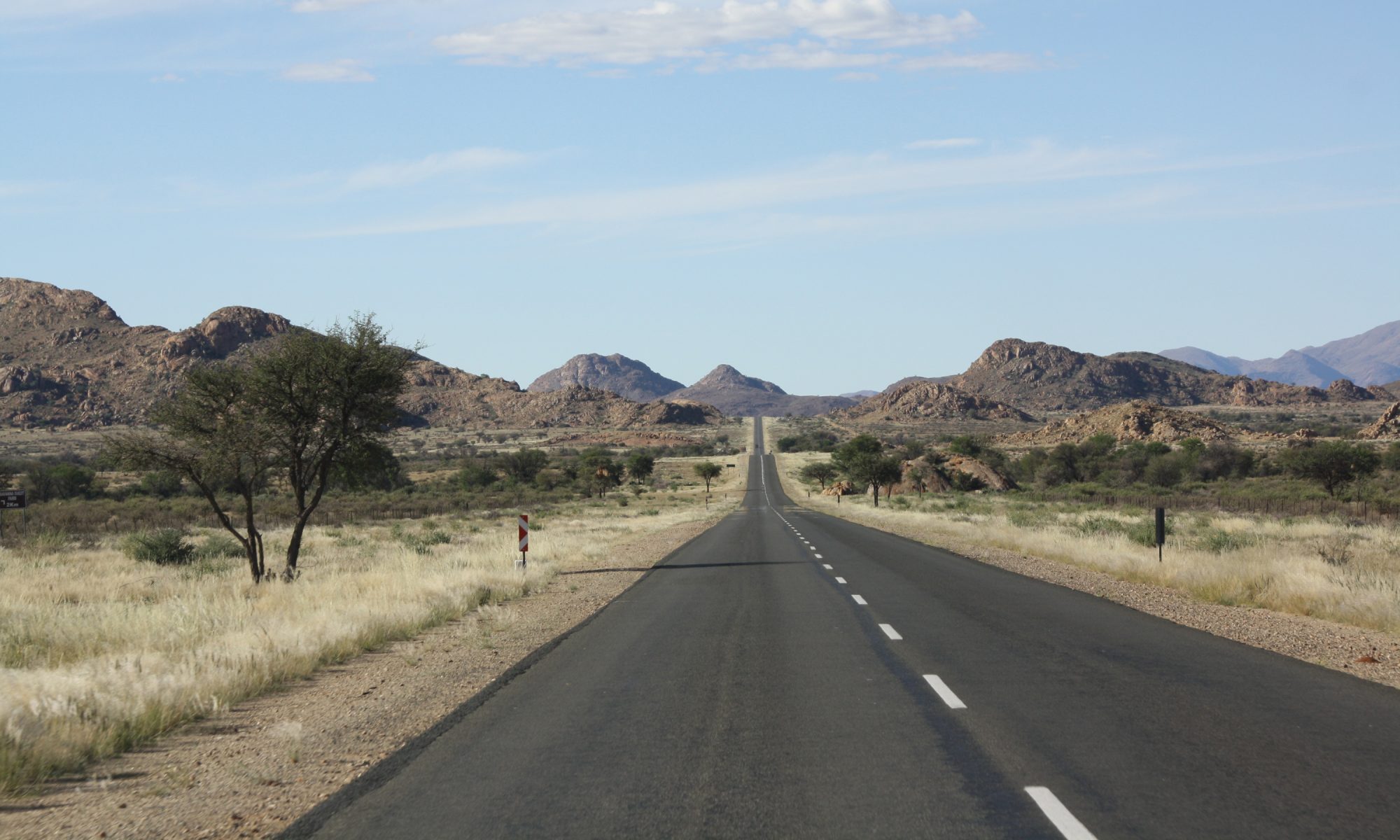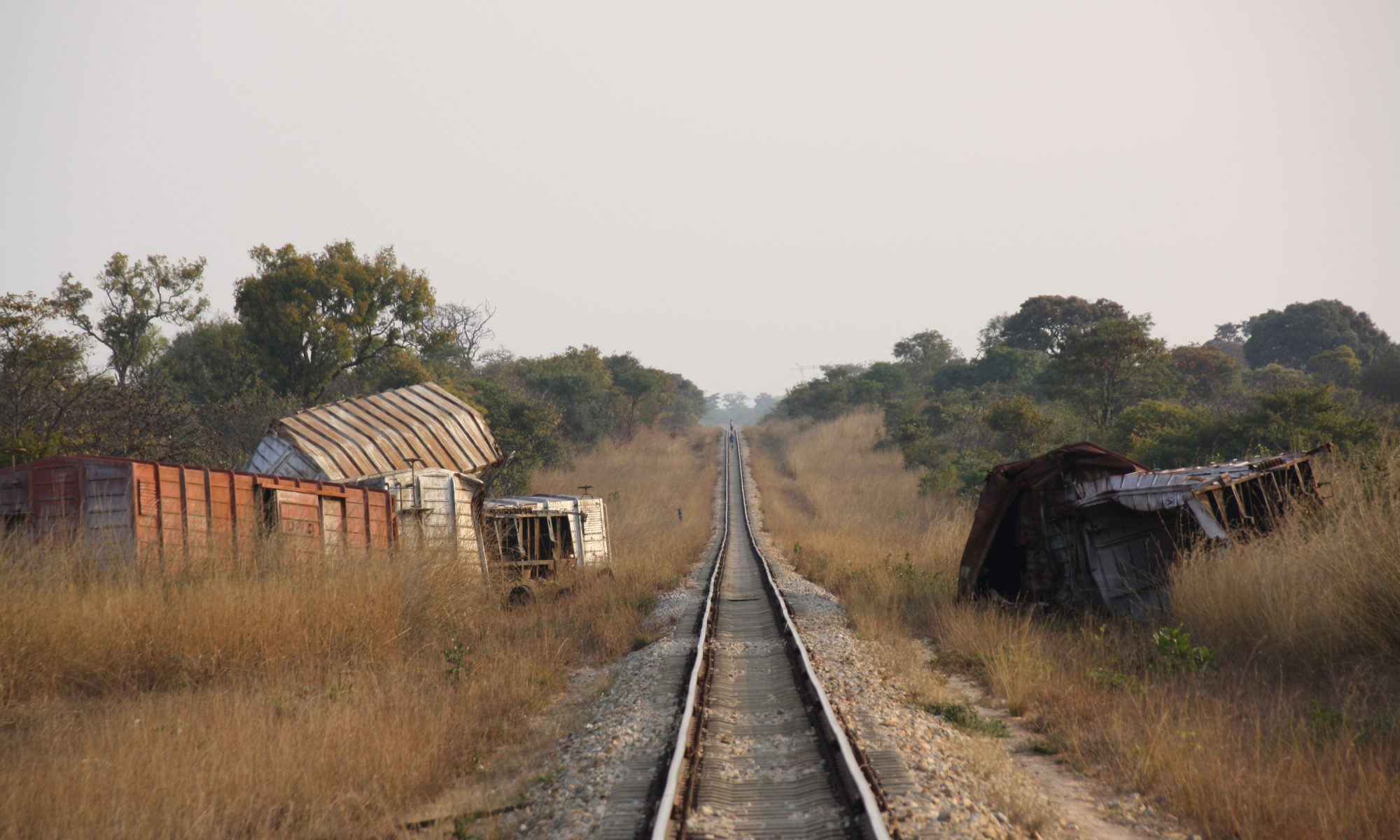TIM ZAJONTZ, St Andrews Africa Summit Review 3/2017
“The TAZARA of today is no longer what it used to be”, explains Robert (name altered) to me. I met him at a railway crossing not far from Ishitu in Zambia’s Northern Province. He has been working for the bi-national railway corporation for 25 years. We both gaze at the remains of a derailed cargo train. Robert reports that derailments have become more frequent in recent years, just like month-long non-payments of salaries to the 2,797 TAZARA employees. Yet, he also remembers the glory days of the “Uhuru Railway” – the Freedom Railway.
Indeed, the history of the TAZARA, which links the port city of Dar es Salaam with Kapiri Mposhi in Zambia’s Central Province, is exceptional. In an attempt to decrease the dependency of Zambia and newly independent neighbouring states from transport routes through Ian Smith’s Rhodesia and Apartheid-South Africa, TAZARA’s founding fathers, Julius Nyerere and Dr. Kenneth Kaunda, embarked on a monumental infrastructural project. They found a committed development partner in Mao’s China, after several requests for aidTim 2017 photo 2 – amongst others vis-à-vis West Germany, the UK, Japan, the US, the Soviet Union and the World Bank – had come to nothing due to Cold War geopolitics. With much anti-imperial fanfare, 38,000 local and 13,500 Chinese workers built 22 tunnels, 320 bridges, 93 train stations and 1,860,5 kilometres of rail line across topographically challenging terrain. The loss of the lives of 160 workers during the construction from 1970 to 1975 has not adversely affected the pathos surrounding the Sino-African ‘friendship project’. Moreover, the precarious life and work conditions along the route and the, at times, conflictual and segregated relationship between Chinese and local members of the work force have been romanticised in most official accounts. The TAZARA became a freedom symbol for the entire continent.
Between nostalgia and reality
For many years, the TAZARA has been struggling for economic survival. Initially designed for a yearly cargo capacity of five million metric tons, which it never in its history reached, TAZARA transported a mere 88,000 tons in the financial year 2014-15 and therewith set a new negative record. While the downward trend could be stopped in more recent times, the highly indebted and infrastructurally ailing rail enterprise remains miles away from its performance in the 1970s and 1980s. At that time, well over one million tons of copper, foods and consumer goods were moved on TAZARA rails in peak years. The TAZARA has equally suffered tremendous losses in passenger transportation and is no longer the preferred means of travel for many Zambians and Tanzanians. Only two passenger trains a week, the express train “Mukuba” as well as the ordinary service of the “Kilimanjaro”, run between the two termini currently. Kelvin and Garson, two Zambian cross-border traders who transport goods on a regular basis, have switched to intercity busses years ago. For the two, economy of time and reliability of service are crucial. Moreover, the traders report that, at times, both hygienic conditions and the security on board of the passenger trains leave much to be desired. Particularly in conversations with former TAZARA customers, both extant pride about a centennial project and a serious loss of trust into TAZARA’s operations come to light.
Road vs. rail
Central to TAZARA’s economic woes is its lacking competitiveness vis-à-vis road transporters. The causes for this are multiple and some have been protracted for a long time. With the privatisation of Zambia’s mines in the 1990s, the state-directed ‘symbiosis’ between the government-owned mining company and TAZARA came to an end. Subsequently, TAZARA got exposed to increasingly unequal competition with road-based transport which registered explosive growth at the turn of the millennia.
Not only did large portions of capital from post-Apartheid South Africa, whose economy has been marked by significant over accumulation, literally move into the entire southern African region – in the form of brand-new trucks. Zambian, Tanzanian and
Tim 2017 photo 3Congolese elites also discovered the lucrativeness of the transport sector against the backdrop of rapidly liberalising national and regional markets. Upholding a supposedly antiquated infrastructural relict from the socialist era no longer matched the politico-economic zeitgeist – and was at odds with personal business interests of some politicians-turned-transport-tycoons
Adding to the chronic public under-investment into infrastructure and rolling stock as well as to mounting debt levels, which today add up to about US$ 700 million, TAZARA, for a long time, has been home to alarming mismanagement by politically appointed top-managers. Considering these developments, it is hardly surprising that members of the business community commonly cite the same reasons when asked why they do not entrust TAZARA with their shipments, namely its long transit time and its limited reliability. Current maximum speeds of 30 kph for cargo trains and 40 and 70 kph respectively for the passenger traffic as well as the overaged rail infrastructure result in oftentimes unpredictable schedules and long delays. However, ‘time is money’, not least in the transport sector. As a result, in Zambia only 5 per cent of bulk cargo is currently transported by rail.
Competition of corridors
The TAZARA experiences competition not only from trucks along the TANZAM Highway but also through the expansion of neighbouring transport corridors. Whereas, for widely known geopolitical reasons, the Freedom Railway, served for almost two decades as Zambia’s most important commercial life line, the TAZARA Corridor nowadays competes with other access routes to the sea. In order to further link Zambia with global markets, not least with China, the Zambian government awarded a contract for the construction of a new railway between Serenje and Chipata to the China Civil Engineering Construction Corporation. The US$ 2.3 billion greenfield project is unsurprisingly funded by the Chinese government, adding to Zambia’s skyrocketing public debt. It aims at connecting Zambia’s existing railway network via Malawi with Mozambique’s natural deep-sea port Nacala, a growing ‘gateway to China’.
Another idea circulates in Zambian ministerial offices, namely a railway link between Kafue, which is situated an hour South of Lusaka, and Harare. This would significantly shorten the rail distance of the corridor to South Africa and, while, at the same time, provide a direct rail connection to the port of Beira. Despite the bigger distance, by far the largest share of Zambia’s copper exports currently rolls along the South Corridor to Durban and Richards Bay – most of it on the road. The efficiency of South Africa’s ports plays a crucial role in this context. Steadily growing cargo volumes are also shipped in and out of Walvis Bay in Namibia. These examples underline that the future of TAZARA is, to a great extent, dependent on a multitude of regional developments and dynamics.
Decision-makers within the relevant ministries as well as in the TAZARA headquarters in Dar es Salaam therefore frantically search for solutions to TAZARA’s economic plight. In September, they signed a memorandum of understanding on a cooperation with the Canadian air and rail transport giant Bombardier. The talk is of an investment volume of over half a billion US dollar towards the maintenance and modernisation of infrastructure and rolling stock. The source of funds remains unclear. One also learns from Zambian officials that there are high-level negotiations with prospective Chinese partners underway, too. Attending to the interests of the former TAZARA financier China, the company’s CEO Bruno Ching’andu, on the day of signing, was quick to clarify that TAZARA “remain[s] very open to all possibilities for introducing investments in rolling stock and infrastructure, which is essential for uplifting our capacity and instilling confidence in our customers”.
The spectre of privatisation
A (partial) privatisation of TAZARA however remains a taboo topic – for now and in the public discourse at least. In both countries memories of failed privatisation attempts of the national railway companies are still fresh. In 2003, Zambia granted a concession which was worth US$ five billion to a consortium of South African and British investors who were tasked to whip into shape the operation and infrastructure of the Zambian railway. It did not take long before serious capacity constraints on the part of the concessionaire became apparent. Moreover, irregularities in the tender procedure came to light. As a result, President Sata ‘applied the emergency brake’ and cancelled the 20-years concession early – resultant legal quarrels included. Tanzania Railways Limited (TRL) set off on a similar corporate odyssey in 2007. The government ceded 51 percent of TRL’s shares to Indian state-owned RITES which was supposed to operate the railway company for 25 years. However, because of growing dispute over contractual details the concession was unilaterally terminated after only three years by the Tanzanian government. Reservations towards a privatisation of TAZARA have not least increased since President Magufuli took office in 2015. So far, his economic policies are characterised by the attempt to re-nationalise key industries.
TAZARA’s operations could potentially be boosted by an agreement between the company and Zambia Railways Ltd. (ZRL) which was signed in August. According to the open access agreement, ZRL trains can in the near future roll on TAZARA rails. In turn, TAZARA would be able to serve its clients in Lusaka and the Copper Belt right at their doorstep by accessing the ZRL rail network. TAZARA’s CEO Ching’andu therefore spoke of a “seamless service” which TAZARA could offer from now on. Yet, he made no secret of the state of his company on the day of signing: “As things stand now, we have no choice but to start thinking creatively to find other non-traditional ways of generating revenue. Innovativeness is now the cornerstone for our survival, in the immediate term“. Consequently, the TAZARA management expects from the cooperation new orders in Zambia’s economic centres, the mitigation of its drastic shortage in rolling stock and, not least, urgently needed revenues from leasing its rail infrastructure to another operator. A similar form of cooperation with Tanzania’s national railway company however remains impossible, as the country’s Central Line, which links Dar es Salaam with Mwanza as well as Kigoma, still features the narrow-gauge rail infrastructure (1.0 metres) inherited from the German colonial time. Tanzania’s ambitious plan of a newly constructed Central Line, will equally not yield connectivity between TAZARA and the future Central Line.
Rail infrastructure as a location factor
Despite all odds, a general commitment to rejuvenate TAZARA can be witnessed both in Zambia and Tanzania. The introduction of a road toll system in Zambia underlines the political will to involve road-based transporters in the huge, mostly debt-financed public expenditures for road construction and maintenance. This move will further improve the cost attractiveness of rail transportation. In addition, the Zambian government announced that it is working on a Statutory Instrument which will demand 30 percent of bulk cargo to be transported by rail. Indeed, the said legislation is still waiting for its implementation, probably not least because decision-makers are well aware that, at this point in time, TAZARA and ZRL could not satisfy such an increase in demand. Such initiatives nevertheless testify growing political awareness that the decade-long neglect of rail transport systems and an uncritical reliance on a private-sector driven trucking industry has resulted in major locational handicaps. As a consequence thereof, the current development plans, Zambia’s 7th Development Plan and Tanzania’s Second Five Year Development Plan, both make the restoration of railways main priorities. President Magufuli, formerly himself responsible for the transport portfolio, seems ready to take on Tanzania’s influential trucking lobby and to revamp his country’s ailing railway network. The at times fierce rivalry with neighbouring Kenya over the dominant position as Africa’s trade hub at the Indian Ocean can hardly be overstated as a driving force for current policies in Tanzania’s transport sector.
In times of major politico-economic transformations in Africa, the outcome of TAZARA’s fight for economic survival remains open. Solely for TAZARA employee Robert things seem to be straightforward: “We need the Chinese to get back on track”, he explains to me at the track bed of the Freedom Railway.

